Jupiter Returns
In a recent blog, we celebrated the return of Saturn to our skies.
Now it’s the turn of the largest planet.
Jupiter returns this autumn through to winter.
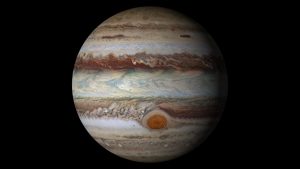
Jupiter. Credit: NASA
How to find Jupiter
Jupiter is fairly high in the sky through November.
It is the brightest object in the South, brighter than any star.
This year the giant planet lies to the right of Orion and Taurus.
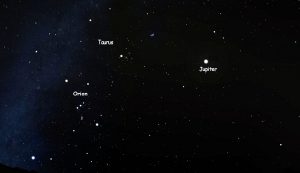
Jupiter in November 2023. Credit: Stellarium
Jupiter quick facts
- Fifth planet in order from the Sun
- Largest planet in the Solar System
- 143,000 km across, 9 times diameter of Earth
- Rotation, Jupiter’s day is only 10 hours.
- Orbit distance from Sun: 484 million km, 5.2 times Earth.
- Orbit time, Jupiter year: 12 years.
Gas Giant
Composition
Jupiter is a gas giant planet.
Its thick atmosphere is 90% hydrogen and 10% helium by volume.
The white cloud belts are made of methane and ammonia ices.
The reddish cloud zones contain phosphorus and sulphur compounds.
Internal structure

Internal structure of Jupiter. NASA
A dense core is made of rock and ices.
Outside that is a thick envelope of metallic hydrogen.
That in turn is surrounded by hydrogen gas.
Clouds
The cloud layer is around 50 km deep.
It’s made mainly of ammonia ice crystals along with water ice, methane, sulphur and phosphorus compounds.

Clouds of Jupiter from Juno. NASA / JPL-Caltech / SwRI / MSSS / David Marriott
Storms show as oval whirlpools in the clouds.
The most famous storm is the Great Red Spot.
This is a storm which has blown for hundreds of years.
The Great Red Spot is larger than planet Earth.
However it seems to be shrinking.
When the Voyager missions flew by Jupiter in the 1970s, it was around 23,000 km wide.
By 2015, the spot was about 16,000 km wide.
![]()
Great Red Spot, Juno mission. NASA/JPL-Caltech/SwRI/MSSS/Gerald Eichstädt/Seán Doran
I have observed Jupiter for over 60 years.
The spot is definitely smaller now than when I first saw it.
Observing Jupiter
Viewing Jupiter through a telescope is very rewarding.
The giant planet appears as a disc in any small telescope.
The light bands and zones can be seen clearly as dark and light transverse stripes.
The Great Red Spot shows up if it is on the side facing Earth.
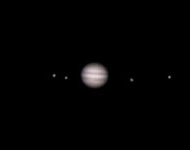
Jupiter & moons seen through a small telescope.
A telescope will also reveal the four big moons of Jupiter.
They are Io, Europa, Ganymede and Callisto.
These are the moons discovered by Galileo in 1610.
From their motions, the Italian astronomer showed that the Earth was not the centre of the Solar System.
Their orbits around Jupiter mean that the four moons are not always on view together.
Sometimes one or more are hidden behind the planet.
In 1676, Danish astronomer Ole Romer measured the speed of light using eclipses of Io.
Edmund Halley refined Romer’s results and calculated the speed of light was 300,000 km / sec.
That in the days when the fastest thing was a horse!
Space Probes to Jupiter
Flybys
Seven robotic spacecraft have flown by Jupiter.
Pioneer 10 and 11 were the first in the early 1970s.
These probes paved the way for the two Voyager probes in 1979.
They gave the first clear images of the four great moons.
The Voyagers also discovered Jupiter’s rings.
Three more missions, Ulysses, Cassini and New Horizons had other primary targets.
Orbiters
The first spacecraft to orbit Jupiter was Galileo.
Launched in 1989, it entered Jupiter orbit in 1995.
It spent almost 8 years travelling around Jupiter and its four largest moons.
Galileo’s data indicates that both Europa and Ganymede have oceans of water below an ice crust.
The latest mission to is NASA’s Juno.
Juno arrived at Jupiter in July, 2016 after a five year journey.
This new spacecraft is surveying Jupiter in unprecedented detail.
It is examining the atmosphere, gravitational field and magnetic field.
Juno’s findings will help astronomers to assess Jupiter’s compostion and likely origins.
The probe has already sent some remarkable images of the giant planet.
Here are some of them.
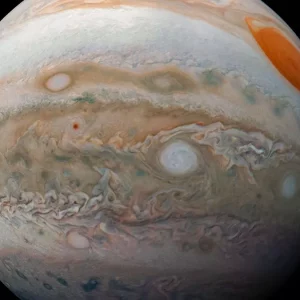
Jupiter marble. NASA/JPL-Caltech/SwRI/MSSS/Kevin M. Gill
In our first Juno image we can see the Great Red Spot and Jupiter’s turbulent atmosphere.
Juno was around 60,000 km above the planet’s surface.
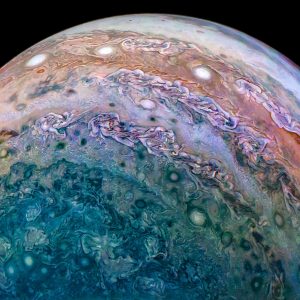
Jupiter’s turbulent clouds: NASA/JPL-Caltech/SwRI/MSSS/David Marriott
Our second image from Junocam shows turbulence and storms in the clouds.
The picture was created by citizen astronomer David Marriott.
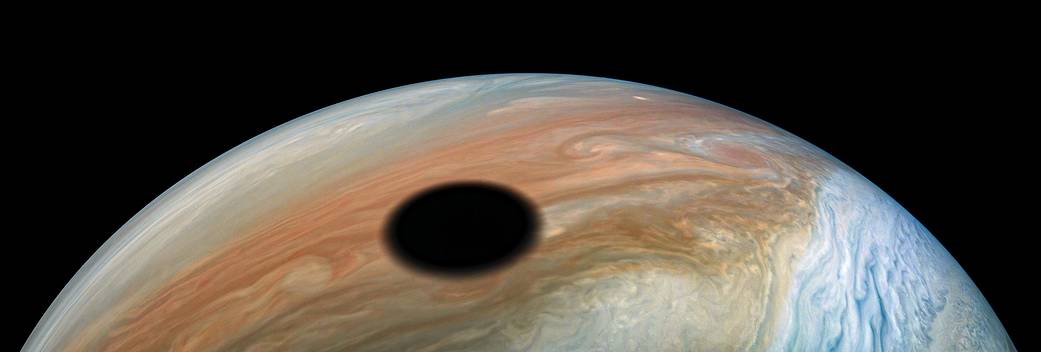
Shadow of moon Io NASA/JPL-Caltech/SwRI/MSSS/Kevin M. Gill (CC-BY)
Our next image shows the shadow of moon Io on the cloud tops of Jupiter.
The shadow is around 3,600 km wide.
I love this dramatic scene.
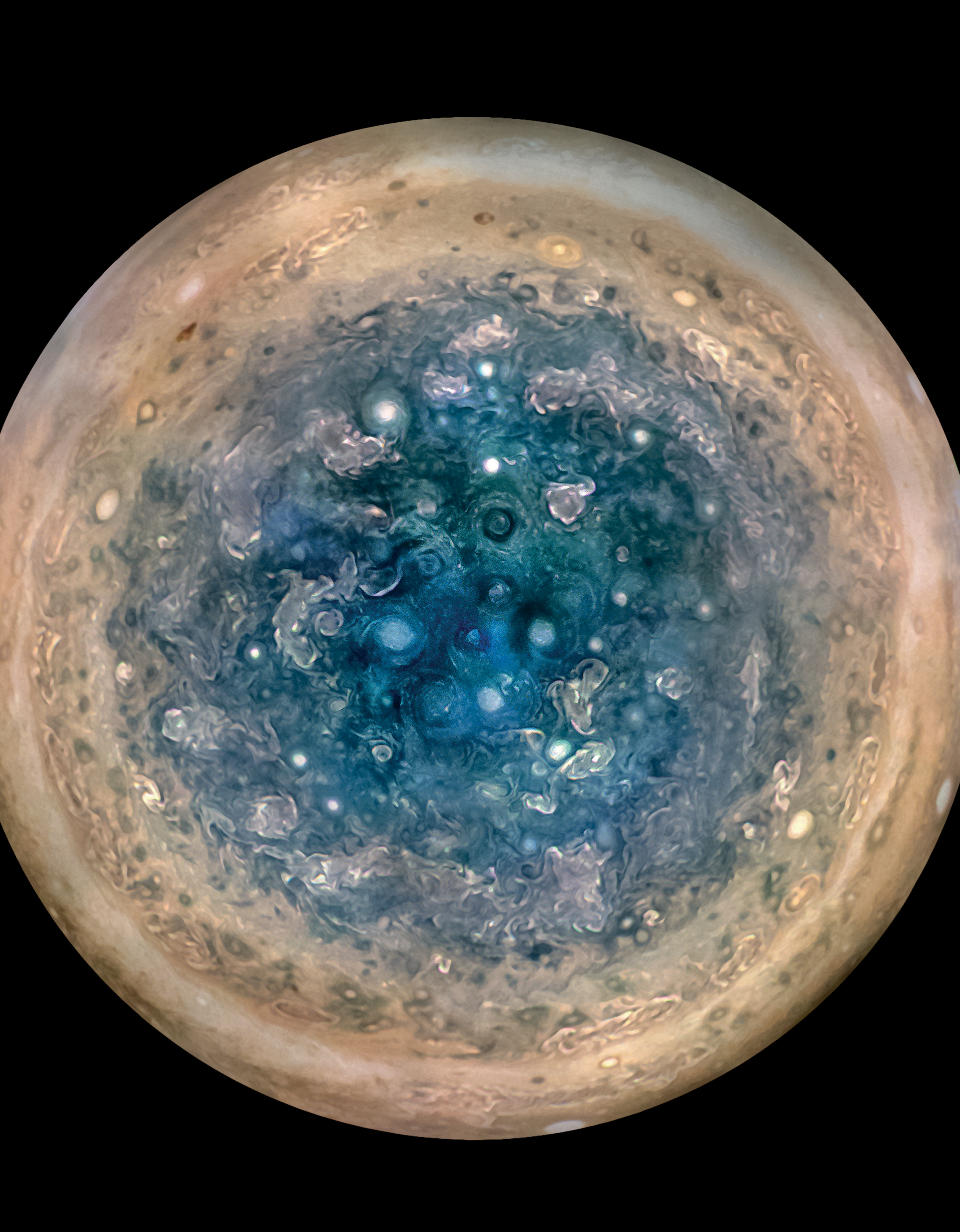
Jupiter South Pole. NASA / JPL-Caltech / SwRI / MSSS / Betsy Asher Hall / Gervasio Robles
I’ve saved the best till last.
My final image shows Jupiter’s South Pole.
It’s a mosaic of several images taken from around 52,000 km.
The stormy white ovals are 1,000 km across.
If you would like to process raw Juno images, find out how at http://missionjuno.swri.edu/junocam.
And there’s much more!
You can find your own favourite Juno images at Juno – Mission to Jupiter | NASA
They show the biggest planet in a real new light.
And, of course, you can see the real thing on any clear night through our northern autumn.
Good viewing!
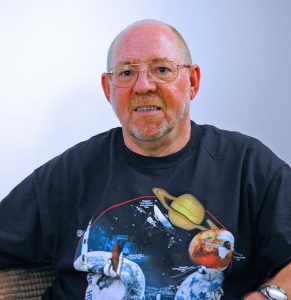
The author: Dennis Ashton is a Fellow of the Royal Astronomical Society and a Wonderdome presenter.
Would you like to hear more Astronomy news?
Do you want to to find out about our upcoming public events?
Follow WonderDome Portable Planetarium on Twitter and Facebook or go to our web site wonderdome.co.uk

